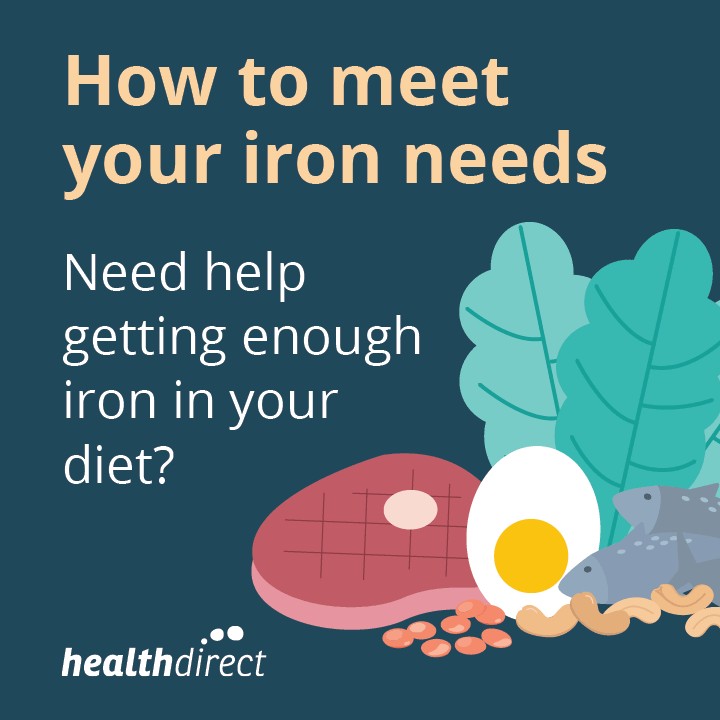Iron is a vital nutrient that our bodies cannot produce on their own; we must obtain it through our diet. It plays a crucial role in numerous bodily functions, most notably in preventing anemia by forming hemoglobin, the protein in red blood cells responsible for carrying oxygen throughout the body. While the body can store iron, it cannot synthesize it, making dietary intake essential.
Two Types of Iron in Food
Dietary iron comes in two forms, each with different absorption rates:
- Haem Iron: This type of iron is readily absorbed by the body and is primarily found in animal-based foods.
- Non-Haem Iron: Found in plant-based foods and eggs, non-haem iron is less easily absorbed by the body compared to haem iron.
Excellent Sources of Haem Iron
To boost your haem iron intake, incorporate these foods into your diet:
- Meat: Beef, lamb, pork, and even kangaroo are excellent sources of haem iron.
- Poultry: Chicken, turkey, and eggs contribute to your haem iron levels.
- Seafood: Salmon, sardines, and tuna are not only rich in omega-3 fatty acids but also provide haem iron.
- Organ Meats: Liver, kidney, and pâté are particularly concentrated sources of haem iron.
 Grilled steak with rosemary, a high haem iron food source
Grilled steak with rosemary, a high haem iron food source
Plant-Based Sources of Non-Haem Iron
Even on a plant-based diet, you can obtain iron, though non-haem iron is less efficiently absorbed. Plant-based eaters should aim for about 80% more iron intake than those who consume meat to meet their needs. Good plant-based sources of iron include:
- Iron-Fortified Foods: Bread and breakfast cereals that are fortified with iron can significantly contribute to your daily intake.
- Nuts and Seeds: A variety of nuts and seeds offer non-haem iron.
- Dried Fruit: Dried fruits like raisins and apricots can be a source of iron.
- Whole Grains: Wholemeal pasta and bread provide non-haem iron, alongside fiber and other nutrients.
- Legumes: Mixed beans, baked beans, lentils, and chickpeas are excellent plant-based iron sources.
- Dark Leafy Green Vegetables: Spinach, silver beet (chard), and broccoli, while nutritious, contain non-haem iron that needs to be consumed in larger quantities or paired with vitamin C for better absorption.
- Tofu: This soy-based protein is a good source of non-haem iron for vegetarians and vegans.
Recommended Daily Iron Intake
The amount of iron you need daily varies depending on your age and sex. Here are the recommended dietary intakes (RDIs):
Children:
- 7-12 months: 11mg/day
- 1-3 years: 9mg/day
- 4-8 years: 10mg/day
- 9-13 years: 8mg/day
Infants are born with iron stores built up during pregnancy, but these deplete by around 6 months of age. Iron-enriched cereals are often recommended as a first food to introduce at about 6 months to help maintain iron levels.
Teenagers (14-18 years):
- Males: 11mg/day
- Females: 15mg/day
Adults (19-50 years):
- Males: 8mg/day
- Females: 18mg/day
Adults (50+ years):
- Males and Females: 8mg/day
Pregnancy and Breastfeeding:
- Pregnant Women: 27mg/day
- Breastfeeding Women (14-18 years): 10mg/day
- Breastfeeding Women (19+ years): 9mg/day
Women of menstruating age require higher iron intake due to iron loss during menstruation.
Enhancing Iron Absorption Through Diet
The way you prepare food and combine different foods can significantly impact how much iron your body absorbs.
Foods that boost iron absorption:
- Vitamin C-Rich Foods: Vitamin C dramatically improves non-haem iron absorption. Consuming foods rich in vitamin C alongside iron-rich meals is highly beneficial. Examples include:
- Citrus fruits (oranges, lemons)
- Tomatoes
- Berries
- Kiwi fruit
- Melons
- Green leafy vegetables
- Capsicum (bell peppers)
Try to eat these vitamin C-rich foods raw and at the same meal as your iron sources. Drinking orange juice with your meals or taking a vitamin C supplement can also help.
Foods that hinder iron absorption:
Certain foods and beverages can reduce iron absorption, especially non-haem iron:
- Coffee and Tea: These contain tannins that can inhibit iron absorption.
- Red Wine: Both alcoholic and non-alcoholic red wine contain compounds that can reduce iron uptake.
- Calcium-Rich Foods: Dairy products like milk, cheese, and yogurt, as well as calcium supplements, can interfere with iron absorption.
- Soybean-Based Foods: Some compounds in soybeans can also reduce iron absorption.
It’s advisable to consume these items between meals rather than with iron-rich foods to minimize their impact on iron absorption.
Consequences of Insufficient Iron Intake
If you don’t consume enough iron, you may develop iron deficiency. Iron deficiency occurs when your body’s iron stores are depleted, which can lead to:
- Fatigue: Feeling unusually tired and lacking energy.
- Headaches: Frequent headaches.
- Difficulty Concentrating: Impaired focus and cognitive function.
Prolonged iron deficiency can result in iron deficiency anemia, a condition where the body doesn’t have enough red blood cells to carry adequate oxygen. If you suspect you might be iron deficient, it’s important to consult your doctor.
The Risks of Excessive Iron Intake
While iron deficiency is a concern, too much iron can also be harmful. It’s crucial to speak with your doctor before taking iron supplements.
Some individuals have a genetic condition called haemochromatosis, which causes the body to absorb and store excessive amounts of iron. This condition affects approximately 1 in 200 people and is often detected through screening, especially in individuals with a family history of haemochromatosis.
If you have any concerns about your iron levels, consulting with your doctor is always recommended.
Resources for Further Information
For more comprehensive information on iron and other essential nutrients, explore resources like the Eat for Health website. You can also seek health advice from professionals to ensure you are meeting your nutritional needs.